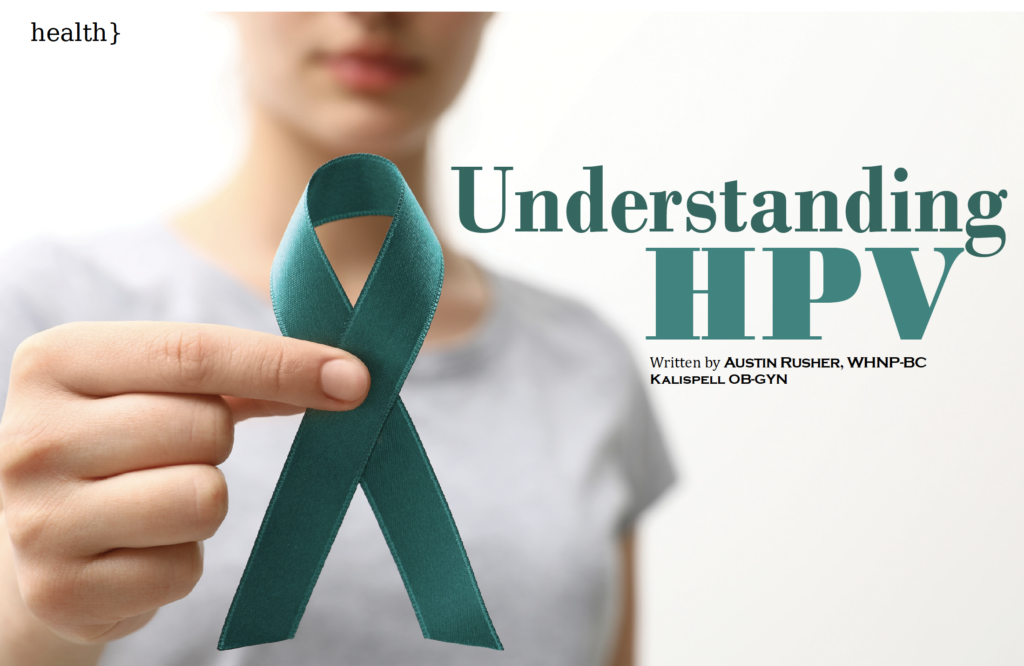Understanding HPV

As of the Wednesday that I sat down to write this article, the two most commonly Google-searched, women-related topics were “pregnancy” and “HPV.” Pregnancy, in all of its wonder, is definitely too broad of a topic for today’s article. HPV, on the other hand, seems like a reasonable venture. HPV is the abbreviation for the Human Papilloma Virus. It is a sexually transmitted virus and it is prevalent in the human population. It is basically just a part of being, or having been, sexually active. Biological beings have biological problems, with all the joys and less joyful associations.
Basically, by our mid to late twenties, over eighty percent of us will be exposed to HPV. The implications of exposure vary from person to person. The younger we are, the more likely our immune system will be able to subdue the virus. Our age, genetics, epigenetics (our environmental effects on our genetics), etc., all contribute to our body’s response to HPV. If our immune system is weakened (long term or short term), the virus is given the opportunity to replicate and ultimately cause symptoms to occur or re-occur.
Symptoms are the signs that a disease process is occurring and can range from vague and annoying to more life altering. With HPV, this ranges from no symptoms, to genital warts, pre-cancer, to cancer. Quite the range there, huh?! Warts, while annoying and often distressing to their hosts, are generally benign and non-cancerous. They can be removed through numerous treatments and, unfortunately, can re-occur despite treatment. If prolific and resistant to treatment, further evaluation is always warranted for those rare scenarios that are more malignant than the vast majority of cases.
Cervical cancer, on the other hand, carries much more clinical weight than largely annoying skin growths. Over 99% of cervical cancer cases are caused by HPV infection. Luckily, we have cervical cancer screening, which most people think of as their “pap smear.” Cervical cancer screening is usually two-fold. The first part of the test is collecting cells from the cervix and smearing them on a slide for evaluation by a specially trained person known as a Pathologist. The Pathologist is able to assess the cells and determine if there are no changes, non-concerning changes, or changes that require further evaluation. If positive, cervical cancer screening DOES NOT necessarily mean you have cancer. It is just SCREENING. The next step is further evaluation that ranges from watchful waiting with sooner follow up, to a procedure called a colposcopy and possibly biopsies to differentiate between benign and malignant cellular changes.
The second part of cervical cancer screening, and arguably as important if not more important, is “High Risk HPV” testing. HPV testing evaluates the sample for high-risk strains of HPV that are associated with cancer. Notably, there are many strains of HPV but a significantly smaller number that really like the cervical cells, making them susceptible to pre-cancer or cancer. Notably, while gynecology is focused on a specific anatomical area, the virus also likes other areas of our anatomy and we are seeing an increase in oral and throat cancers and regular dental care is advised.
So, what do we do with all of this information? We talk about screening and prevention. According to the American Society for Colposcopy and Cervical Pathology (ASCCP) and American Cancer Society (ACS), cervical cancer screening should be initiated at age 21 years old in the general population (no medical professional should ask you to remove your pants before this unless, with your full understanding and consent, you have a symptom or chosen birth control method that requires it). As we get older, the timing, frequency, and testing changes slightly depending on our prior results and health history. There is a vaccine that can help prevent cervical cancer known as the Gardasil vaccine. This vaccine has largely made it possible to space out screening from annually to the aforementioned screening guidelines. Medical professionals start offering the HPV vaccine series to patients 9 years of age but you can have it administered at any time. Having a healthy diet, lifestyle (avoiding tobacco use specifically), and safe sex practices (use those condoms) are also helpful in preventing HPV infection.
For the general population, cervical cancer screening should be performed every three years prior to the age of 30 years old. The pelvic exam is recommended annually, starting at 21 years of age, to make sure that testing is not warranted in between screening (among other things). The main goal of cervical cancer screening, as indicated by the name, is to screen for cancer. Another objective is to protect the patient from over treatment. Rather than perform a hysterectomy on every positive screening, we follow algorithms to guide care specific to the patient, diagnosis, and their specific risk profile. Often, the guidelines recommend repeating the pap sooner than the general population screening guidelines or performing a colposcopy (a procedure for diagnosis after screening results).
Interestingly enough, for gynecology nerds anyway, recommendations change based on population data. As we gather more information, we can help guide and recommend the most up-to-date care. As always, if you have questions or want to learn more, please come see us, your local gynecology nerds, at Kalispell OB/GYN.
Austin Rusher, WHNP-BC
This article appears in the July 2023 edition of 406 Woman magazine.
